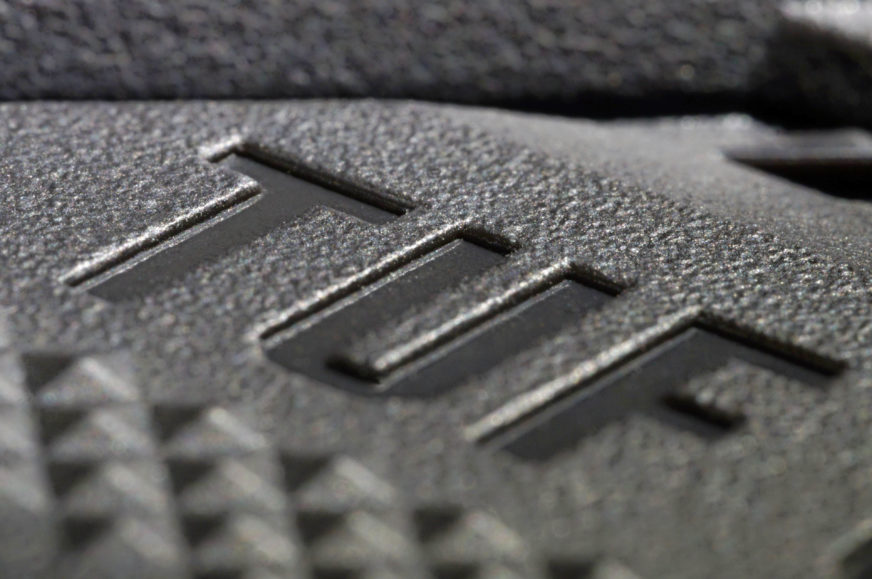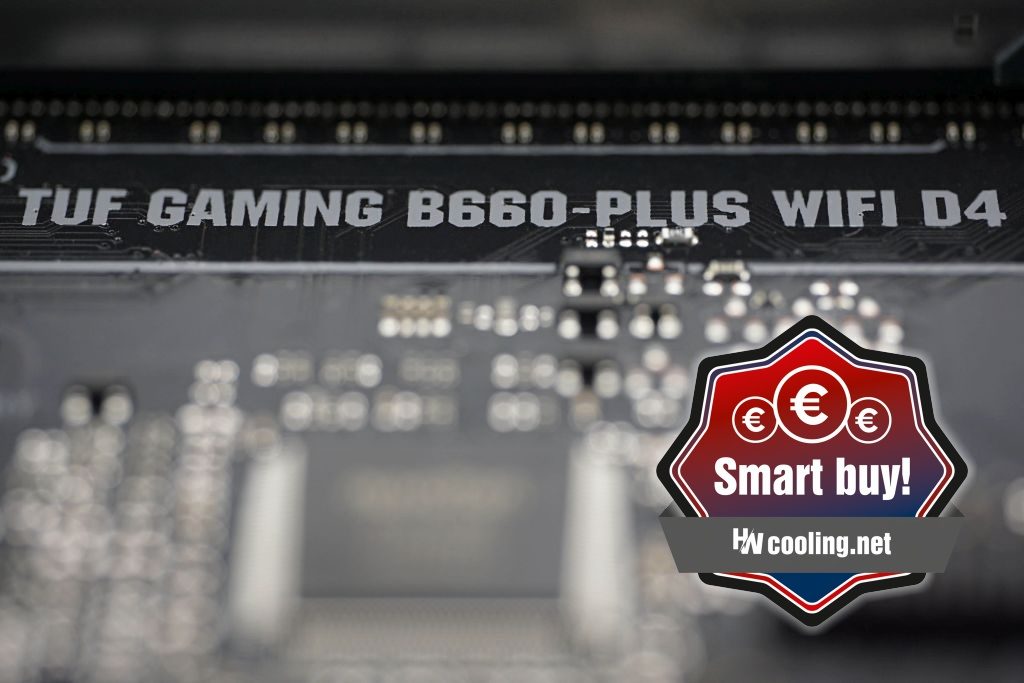Conclusion
Alder Lake CPUs’ favorable price/performance ratio was initially spoiled by expensive motherboards. However, after the arrival of models with Intel B660 chipsets, the unfavorable situation began to turn around and in some cases quite dramatically. Asus TUF Gaming B660 Plus WiFi D4 with support for DDR4 memory, which is far cheaper than DDR5, can handle even the fastest CPUs. And the vast majority of users won’t even feel any bottlenecks.
Conclusion
Few pieces of hardware that pass the HWCooling testlab leave such a good impression as the Asus TUF Gaming B660 Plus WiFi D4 motherboard. This is despite the fact that there is a greater number of negatives in the plus and minus table. However, these are natural and stem from the low retail price, which is key for this board. The important thing is that all the shortcomings are mild and the low price justifies them.
Many editorials will discredit this board on the higher VRM temperatures, but unjustifiably so. As scary as 97°C looks on thermal imaging, without heatsinks and with the Core i9-12900K, it’s a great result. With heatsinks, it’s up to 80°C and there is no performance degradation (by inhibiting multiplier crashes) even with the most powerful processors that can currently be fitted to the LGA 1700 socket.
We have a small complaint only about the 12-pin EPS. With a larger 16-pin power supply, even cheaper power supplies with smaller wire gauge will get less hot inside the connectors. But that’s really a cosmetic issue. Especially because this board is expected to work with cheaper processors with power draws up to 150W, even though the VRM can handle twice that. After leveling the draw to 125 W the temperture of the voltage regulators is pleasantly low.
The above is not to say that the board is suitable for high-end processors. It is not, but for a reason other than the “capacity” of the VRM. The power delivery is cheaper, and performance and power draw tests show it to be less efficient. With similar and rather a hair lower performance (but this is also due to slower DDR4 memory) compared to MSI MAG B660M Mortar WiFi there is a higher power draw. And even in AVX load, in which the TUF Gaming B660 Plus WiFi D4 reduces the multiplier (by 3).
This can be partially compensated for by manually tuning the undervolting, but it doesn’t change the fact that the performance per unit of power draw will be lower on the Asus board.
In return, the off-load regulation is excellently handled, in which even the power draw of the Ci9-12900K processor is always pleasantly low. The Intel I225-V network adapter is also surprisingly better than on most other boards. Compared to the Realtek 8125BG on the B660M Mortar, the recording speed is achieved as expected. There’s even a 20-gigabit (3.2 gen. 2×2) USB Type-C port among the external connectors. The equipment is really decent for a board well under two hundred euros, or rather the savings are in places that users with a lower budget won’t be too bothered about. Especially in combination with cheaper processors.
We won’t discuss the performance results in detail this time, so we don’t have a board with DDR4 memory to compare yet (it will come in the next test) and the differences with B660M Mortar speak more about the impact of differently fast memories. If this issue of comparing DDR5 with DDR4 memory interests you, you can dig through the tests. But you’d better wait for the upcoming measurements, where the memory performance comparison will be based on tests of otherwise identical boards (and in addition to 3600 MHz modules with average speed, we’ll test faster DDR4 with 4400 MHz). But even these tests show that performance doesn’t significantly improve with 5200 MHz DDR5 over DDR4, even with a Core i9-class processor. The results are very similar, and you’ll also come across applications that benefit from DDR4’s lower latencies with otherwise significantly lower bandwidth.
But back to the TUF Gaming B660 Plus WiFi D4. A very solid motherboard at a very nice price. As long as you don’t mind weaker VRM efficiency or simpler fan control options by today’s standards, we approve of this choice.
English translation and edit by Jozef Dudáš
| Asus TUF Gaming B660 Plus WiFi D4 |
| + Decent 11-phase power delivery (VRM)... |
| + ... It won't be surprised even by the Core i9-12900K with no power supply limits |
| + Excellent price/performance ratio |
| + Efficient off-load power management – always low power draw |
| + Superior features within the price range |
| + Rare presence of USB 3.2 gen. 2×2 connector in this class |
| + Up to three M.2 slots for SSD. All with at least PCIe 4.0 support, although the third with only two lanes |
| + Fast Ethernet connectivity |
| - Lower power delivery efficiency – higher power draw per unit of performance |
| - Higher VRM temperatures, but this is no tragedy |
| - Weaker fan control options |
| - Outdated Realtek ALC897 sound chip |
| - Only four SATA connectors |
| Recommended retail price: 177 EUR |
Games for testing are from Jama levova
Special thanks to Blackmagic Design (for licenses for DeNoise AI, Gigapixel AI and Sharpen AI) and Topaz Labs (for licenses for DeNoise AI, Gigapixel AI and Sharpen AI)
- Contents
- Asus TUF Gaming B660 Plus WiFi D4 in detail
- What it looks like in the BIOS
- Methodology: Performance tests
- Methodology: How we measure power draw
- Methodology: Temperature and frequency measurements
- Test setup
- 3DMark
- Borderlands 3
- F1 2020
- Metro Exodus
- Shadow of the Tomb Raider
- Total War Saga: Troy
- PCMark and Geekbench
- Web performance
- 3D rendering: Cinebench, Blender, ...
- Video 1/2: Adobe Premiere Pro
- Video 1/2: DaVinci Resolve Studio
- Graphics effects: Adobe After Effects
- Video encoding
- Audio encoding
- Photos: Adobe Photoshop, Affinity Photo, ...
- (De)compression
- (De)encryption
- Numerical computing
- Simulations
- Memory and cache tests
- M.2 (SSD) slots speed
- USB ports speed
- Ethernet speed
- Power draw curve (EPS + ATX connector) w/o power limits
- Power draw curve (EPS + ATX connector) with Intel's power limits
- Total power draw (EPS + ATX connector)
- Achieved CPU clock speed
- CPU temperatures
- VRM temperatures – thermovision of Vcore and SOC
- SSD temperatures
- Chipset temperatures (south bridge)
- Conclusion













